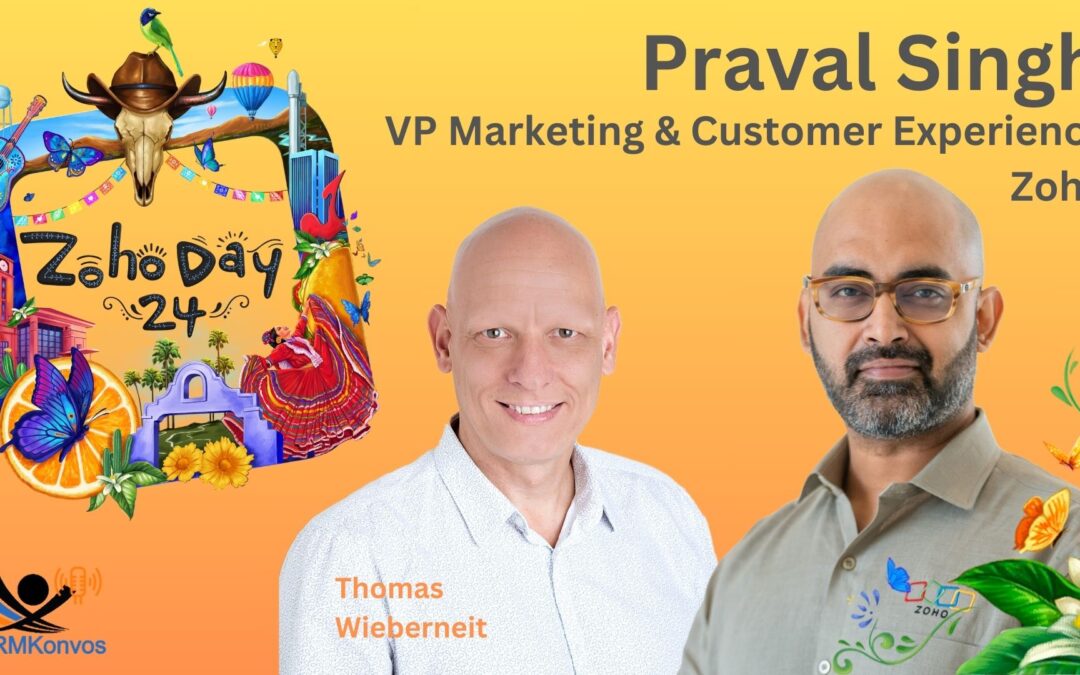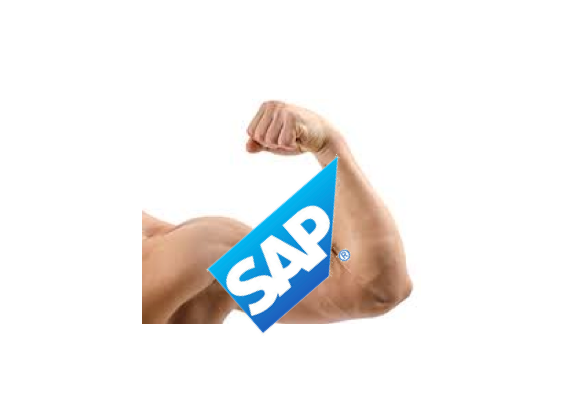
by twieberneit | Jun 12, 2024 | Analysis, Blog |
Zoho’s annual main customer event Zoholics took place in Austin, TX last week. The company presented updates to products and strategy and gave partners the opportunity to present themselves on a big show floor. In parallel to the event, Zoho published some interesting news about product enhancements in four areas, namely security and privacy, CRM for Everyone, collaboration, and platform tools. In addition, Zoho reaffirmed its AI strategy. Of course, CEO Sridhar Vembu set the scene in his usual humble, yet no-nonsense way. He detailed out, why Zoho is truly different. Zoho’s strategy of transnational localism with a clear focus on investing into employees is well known by now, and we see it working. Explaining the strategy with another twist, Vembu laid out five principles that will continue to be essential for every business software vendor to thrive: Investing in a full product portfolio with breadth and depth Offering attractive bundles that have deep value Investing into exceptional service and support Improving interoperability with more prebuilt integrations Getting close to the customer with a strong local partner ecosystem With 55 tightly integrated apps and growing, value-oriented bundles, and a thriving ecosystem, Zoho is certainly on a strong way following these principles. Another topic is the way applications get built by software developers. Vembu compares developers to artisans and postulates that software development will become ten times more efficient with the help of generative AI. The developer’s role will change to become far more one of a scientist, leaving the mundane tasks to the system. This way, the whole development cycle as such changes considerably, also enabling vendors to deliver...

by twieberneit | May 31, 2024 | Analysis, Blog, News |
The news On May 29, 2024, Salesforce reported its results for the first quarter of the fiscal year 2025. Highlights are a total quarterly revenue of $9.133bn US, resembling a year-over-year growth of 11 percent a current remaining performance obligation of $26.4bn US a remaining performance obligation of $53.9B US an operating margin of 18.7 percent. Diluted earnings per share of $1.56 The company reported a revenue guidance of $9.2bn – $9.25bn US for the next quarter and a full year guidance of $37.7bn – $38.0bn US, resembling growth rates of 7 – 8 percent and 8 – 9 percent, respectively. With these numbers, Salesforce ended up at the lower end of last quarter’s guidance on the revenue growth side while exceeding the earnings per share projection and slightly lowered the guidance for the fiscal year 2025. The result: The company’s share price dropped from $272 to bottom out at $212. The bigger picture Salesforce is the big gorilla in the CRM and CX industry. The company has surpassed SAP as the biggest business software vendor in the last 18 months. This is largely thanks to the extraordinary growth that Salesforce showed in the past years and secondly because of SAP’s still ongoing transition from an on-premises vendor to become a cloud vendor. All three, Microsoft, Oracle, and SAP report a higher cloud application growth. But then, the big games in town are generative AI and infrastructure. All of these companies, including Salesforce, are investing heavily in their own artificial intelligence capabilities in a race to provide superior business applications. Plus, several other ones, including Google and, specialist vendors....

by twieberneit | May 14, 2024 | Blog |
By now, everyone has recognized that we are in an AI hype. Again. It is probably the fourth since Joseph Weizenbaum developed the famous ELIZA, a natural language processing program that was intended to explore communication between humans and machines. In the early nineties we saw another wave when we saw the first neural networks; in the tens of this century, we saw machine learning making strides and now … Now we have generative AI. And every vendor – and buyer – jumps on it, often thinking of drastically improving business and employee performance – or replace some employees with technology – and of enjoying the ultimate competitive advantage. Nothing could be farther from the truth. Adapting and using AI tools gives a temporary advantage at best. Why temporary? Temporary, because technology is nothing that the competition cannot use. In fact, they will do the same and with that, any, or at least most, competitive advantage gets leveled again. And why at best? Because you might not get an advantage at all, for several reasons. Chief of them is missing corporate readiness. AI can be a very helpful tool, but it is a tool, that needs an organization to be prepared across several dimensions. Regardless of how these dimensions are laid out in detail, they include Strategy and leadership, infrastructure, people, culture, governance and last, but not least, data. Not being prepared in one or more of these dimensions can greatly diminish the projected benefits of adopting AI technology. A simple yet obvious example would be the employees being hesitant to use the provided tool if they feel that...

by twieberneit | Mar 4, 2024 | Blog, Sponsored |
What the heck is customer experience, and who is responsible for it? These are two very good questions, for which I, myself, have some very distinct answers. Let’s start with them, before I dive deeper into that topic with Praval Singh, VP Marketing for Customer Experience at Zoho, who – naturally – has some good answers, too. You prefer the original? Of course, you can watch the complete conversation, too. Praval Singh of Zoho talks customer experience Here it goes. Re customer experience, I am with Paul Greenberg and Bruce Temkin, who some years ago defined customer experience. Paul defines customer experience as “how the customer feels about a company over time” while Temkin defines it as “the perception that customers have of their interactions with an organization”. Either does it for me. It is the customer’s perception. This makes it quite easy to answer the second question. Who is responsible? Answer: The customer! Why? Because the organization cannot control how I perceive my interactions because it simply doesn’t know enough about my current context, aka situation, at any given time. Organizations regularly do not know enough about my cultural background, my current situation, or my current mood. What they can do, is taking an educated guess, based upon whatever data and algorithm or AI they have at hand. What the organization can control to some extent, is their half of an engagement. This means that the best intended engagements can result in unintended and undesired perceptions. Customer experience is a function of the customer’s experiences, the expectations towards a brand/product/company and the customer’s mood at the time of...

by twieberneit | Jan 25, 2024 | Analysis, Blog |
The News On January 23, 2024, SAP announced the results of its Q4 and fiscal year 2023, along with an update of the company’s 2025 ambition. The ambition includes a shift of focus on key strategic growth areas and a restructuring program. This program will cost around 2.2 billion dollar and affect about 8,000 employees. Notably, SAP does not look at lay-offs but a “voluntary leave program and internal re-skilling investments”. No details are known yet. One of the core investment areas going forward will be Business AI; in addition, the company will strive to capture organizational synergies, leverage AI-driven efficiencies and prepare the company for the expected growth. Looking at the numbers, SAP had a very successful year, meeting or exceeding the outlook metrics set and communicated for 2023. SAP key financial results FY 2023; source SAP According to CEO Christian Klein, the “current cloud backlog increased by 27 percent to reach an all-time high” growth. This number and the cloud revenue are particularly driven by S/4HANA growth. In addition, SAP communicated a bold outlook with a CAGR of 25 percent plus through 2025 and beyond. Wall Street was excited. The Bigger Picture AI is the new cloud, currently the biggest thing since the invention of sliced bread. The industry is at the peak of an AI hype cycle. So far, we have seen a lot of low-hanging fruit being showcased while being promised an age of AI that “changes everything”. According to the recently published results of the PWC annual global CEO surveyhttps://www.pwc.com/us/en/library/ceo-survey.html, around two thirds of CEOs believe that the use of generative AI will improve their company’s products...






